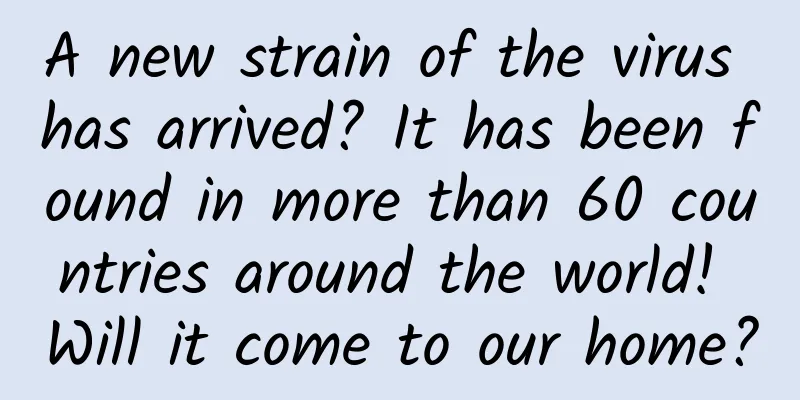Vertical lines and white spots on the nails are a "sign of death"? 4 conditions to be alert to →

|
In life, most people have smooth and rosy nails, but there are also some problems with the nails of many people. For example, some people have obvious uneven vertical stripes on their nails, some have spots, and some have very thick nails or their nails suddenly become smaller... Some people say that vertical stripes on the nails mean poor gastrointestinal health; some people say that white spots on the nails mean that there are parasites in the body; some people even say that abnormal nail symptoms indicate a "signal of death"... So, what is the truth? What conditions on the nails indicate that there may be real problems with the body? Let's talk about it today. Copyrighted stock images, no reproduction is authorized 7 Myths About Nails Debunked Don't be too anxious Rumor 1: Vertical lines on the nails indicate poor digestion and malnutrition. The truth: Most people have fine vertical lines, which is a normal physiological phenomenon. Most people have tiny vertical lines on their nails, the only difference is that some are obvious and some are not. As they age, the vertical lines may become more obvious. This is a normal physiological phenomenon and has no obvious relationship with poor digestion or malnutrition. More obvious and deeper longitudinal lines are medically called "longitudinal nail grooves", which may even develop into longitudinal fissures. They are seen in lichen linearis, lichen planus, subungual warts, and nail dystrophy, and may also occur in X-ray, chemical, or mechanical damage to the nail plate. Rumor 2: White spots on nails are caused by internal parasites. The truth: There is no scientific basis for this statement. Small white spots appearing on the nails are medically known as "punctate leukonychia". They are very common in the normal population and are mostly seen on the nails. They are caused by minor trauma or slight bumps. As the nails grow, they will move outward until they are trimmed off. Rumor 3: Black lines on nails are definitely a warning sign of cancer. Analysis: Black lines on nails are not necessarily a sign of cancer, but it does need to be a cause of concern, because some black lines may be caused by cancer. There are usually four reasons for black nails: ① Melanocyte activation: refers to the phenomenon that melanocytes synthesize more melanin under the stimulation of various factors, without an increase in the number of melanocytes, which is usually a benign lesion. Melanocyte activation is the main cause of single-fingered black nails, seen in more than 70% of adult patients. Various physiological factors, local traumatic stimulation, bad behavioral habits, systemic diseases, drug factors and certain skin diseases can lead to melanocyte activation. ② Nail matrix nevus : The black color of the nail matrix nevus is longitudinal black nail, which often occurs in childhood. The strip-shaped pigmentation is obvious, and the proximal nail folds and periungual tissues may also have pigmentation (pseudo-Hutchinson's sign). If it is difficult to understand, you can just regard it as a "pigmented nevus" growing at the root of the nail. In most cases, nail matrix nevus is also benign, so there is no need to panic. ③ Nail lentigo: The clinical manifestations are very similar to nail matrix nevus, which are also linear black nails and are mostly benign lesions. ④ Subungual melanoma: This disease is a malignant tumor, but it is relatively rare. This type of black line on the nail does not look as "well-behaved and clean" as the previous benign lesions. Its pigment bands vary in depth (dark brown, black or multi-color), the edges are unclear, the width varies, and there may even be nail damage such as nail plate ulceration, nail peeling, and nail loss, as if the nail plate has been "eaten". "Unwell black lines" are not the only manifestation of subungual melanoma. 25% of patients also show non-pigmented nodules that often ulcerate and bleed. If there is Hutchinson's sign (pigmentation of the proximal nail fold or subungual skin accompanied by longitudinal black nail), it should be highly suspected to be nail melanoma. Acral lentiginous melanoma. Image source: Merck Manual of Diagnosis and Treatment In general, linear black nails on multiple fingernails or toenails are often caused by activation of nail melanocytes and do not require active treatment; single linear black nails in children or young people are often nail matrix nevus or nail lentigo, which are benign lesions and can be locally removed if necessary; single linear black nails in adults need to be taken seriously. Although most of them are benign lesions, they still need close follow-up observation. Face-to-face consultation with a specialist physician may be used with the help of a non-invasive dermatoscope for identification and regular monitoring. If changes are found in the black nails or indicate the possibility of malignancy, it is recommended to see a doctor as soon as possible for a clear diagnosis. Rumor 4: The more half-moons you have on your nails, the healthier you are. The truth: The number and size of lunulae vary from person to person and do not reflect health status. The "lunula" on the nails is actually a newly produced keratin cell, scientifically known as the "lunula". Below the "lunula" is the nail matrix responsible for producing keratin, and our nail plate is produced by the nail matrix. There is a "lunula" on each finger or toe, but some are covered by the proximal skin and cannot be seen. The number and size of "lunula" are related to the rate of keratin production and cannot reflect physical health. Age, disease, nutritional status, environment and changes in lifestyle habits can affect the growth rate of the nail plate. Children have a fast metabolism and their nail plates grow fast, so they have more "lunulae", while the "lunulae" of the elderly gradually become smaller with age, which is a normal physiological phenomenon. For people who use their hands frequently, the "lunulae" on the fingers with fast nail wear will be more obvious. If the "lunula" suddenly becomes larger or disappears, it indicates that the growth rate of the nail has suddenly accelerated or slowed down or even stopped, and we should be alert to the possibility of thyroid disease. Hyperthyroidism can cause metabolism to speed up, and the "lunula" will become more obvious; hypothyroidism will cause metabolism to slow down, and the "lunula" will also become smaller or disappear. Rumor 5: Hangnails around the nails are a sign of vitamin deficiency. Analysis: The medical name for hangnails is reverse peeling, which is mostly caused by external stimuli and dry skin on the hands and has nothing to do with vitamin deficiency. Reverse peeling refers to the long triangular epidermis that is dry and cracked around the nails. The skin around the nails is relatively thin and lacks hair follicles and sebaceous glands. The stratum corneum that lacks oil and moisture is easily separated due to dryness and lack of water, thus cracking and curling. In daily life, factors such as daily cleaning products, physical friction, or changes in temperature can reduce the amount of oil in the stratum corneum. The stratum corneum, which lacks oil protection, loses water, resulting in dryness and cracking. Reverse peeling can also be caused by sports, occupational injuries, and neurotic habits (for example, nail biting). If hangnails have appeared, remember not to bite or tear them. Improper handling will cause the injury area to increase and bleeding. If not disinfected, it will cause local infection, paronychia, etc. The correct way to deal with it is to use clean scissors or nail clippers to cut off the raised cuticle at the root. Rumor 6: Nail biting is caused by iron and zinc deficiency. Analysis: Nail biting has nothing to do with iron and zinc deficiency, but is related to mental stress. The symptom of nail biting is medically called onychophagia. Onychophagia is more common in children and adolescents. It is characterized by repeated biting of the free edge of the nails, which leads to shortening of the nail plate. The free edge of the nail plate is often serrated. Sometimes the entire nail surface is bitten, causing the nail plate to lose its luster and develop transverse grooves or ridges. The main causes of this disease are mental stress, imitating family members or transferring thumb sucking habits. For the two reasons of imitating family members and transferring thumb sucking habits, you can distract his attention by participating in interesting activities or games to help him slowly get rid of this bad habit. Blindly criticizing and blaming, or ordering the patient to stop biting behavior, sometimes causes the patient to rebel and may even strengthen the biting behavior, which is very unfavorable to correcting the behavior. If the above methods are ineffective, it is recommended to consult a psychologist in time to improve the symptoms through psychological suggestion or medication. Myth 7: Clubbing of fingers indicates multiple diseases in the body. Analysis: This statement is too absolute. Non-hereditary clubbing does indicate that the body may be at risk for multiple diseases, but hereditary clubbing does not mean the presence of disease. Clubbing is characterized by hypertrophy of the distal phalanx of the fingers (toes) into a drumstick shape, thickening of the nail plate, increased lateral curvature, and disappearance of the Lovibond angle (the Lovibond angle, that is, the angle between the nail plate and the proximal nail fold seen from the side, ACE is 160° in normal nails, while it is greater than 180° in clubbing). Clubbing is usually secondary, most often associated with chronic cardiopulmonary diseases, but can also be seen in digestive system diseases, infectious diseases, endocrine system diseases, infectious diseases, parasites, autoimmune diseases, etc. For example, chronic obstructive pulmonary disease, interstitial pulmonary fibrosis, lung cancer, congestive heart failure, infective endocarditis, cyanotic congenital heart disease, primary biliary and portal cirrhosis, ulcerative colitis, digestive tract tumors, inflammatory bowel disease, etc. Clubbing of fingers (toes) indicates the possibility of disease, and it is necessary to seek medical attention in time, and ask professional doctors to help determine and treat the primary disease in time. In addition, a small number of cases are congenital, often with a family history, and are related to genetics. They do not represent the presence of disease and do not require special intervention . There are 4 situations in your nails that you should be alert to Although most of the above online content is not very accurate, nails can indeed reflect our health status to a certain extent and are a "barometer" of health. If the following conditions occur, it means that there may be something wrong with your body: 1 Nails turn yellow Yellowing of nails is most common in the elderly, which is a manifestation of natural aging. In addition, nail fungus (commonly known as onychomycosis) and psoriasis can also cause nails to turn yellow. If the nails turn yellow and are accompanied by thickening, brittleness, and subungual debris, it is likely that you have "onychomycosis". Although the nails of patients with psoriasis will also turn yellow, they usually have pinpoint-sized pits. 2 Nail color turns red Dark red nail beds are common in polycythemia. Cherry red nail beds are seen in carbon monoxide poisoning. Localized bluish-red spots with tenderness may be subungual glomus tumors. 3 Nails turning blue Clinically known as blue nails, blue nails are common in heart and lung failure, and all nail beds and half-moons are cyanotic. Taking certain medications can also cause blue nails. 4 Nails turning green Clinically, green striped nails can be seen in patients with iron deficiency anemia. Green striped textures appear on the nail plate, which may be accompanied by ingrown nails and gray nails. How to scientifically protect armor? 1. Proper nail trimming: Trim the nails 1-2 times a week according to the growth rate of the nail plate. It is usually recommended to keep the free edge of the nail plate 1-2mm. Avoid over-trimming the two ends of the nail plate, especially the big toe. Excessive trimming of the outer ends is prone to ingrown nails or worsening ingrown nails. If the nail plate is very fragile and easy to split, you can wash your hands or trim it after bathing. Avoid soaking it for too long. Excessive soaking will make the nail plate brittle. 2. Try not to trim the cuticle: The cuticle is a small layer of thin skin covering the nail near the root of the "lunar" that protects the nail matrix at the root of the nail and prevents the invasion of bacteria and foreign objects. 3. Try to reduce direct contact between your nails and objects, or use your nails as tools. Use your fingernails instead of your nails to reduce the chance of injuring your nails. 4. Keep your hands dry: Try to minimize soaking your hands in water, washing hands frequently, or keeping your hands in a wet state for a long time. In a dry state, germs are not easy to grow and the chance of infection will be reduced. 5. Reduce contact with various irritants, such as soap, organic solvents, etc. If you must contact irritants, wear protective gloves as much as possible. 6. Avoid washing your hands with overheated water. Apply hand cream immediately after washing your hands to protect the moist cuticle, especially in winter when the skin is prone to dryness. Don't forget to take care of the surface and root of the nails to prevent moisture loss. Planning and production Author: Yu Sisi Department of Dermatology and Medical Cosmetology, Shijingshan Branch, Beijing Chaoyang Hospital Review | Feng Jun, deputy chief physician of the Dermatology Department of Sinopharm Tongmei General Hospital Ning Tao Associate Researcher, Institute of Biophysics, Chinese Academy of Sciences Editor: Zhong Yanping Proofread by Xu Lailinlin |
Recommend
Texas Hold'em Poker Asia Champion Private Message Camp: From Beginner to Master
Texas Hold'em Poker Asia Champion Private Mess...
Tik Tok short video promotion plan and channels!
Why is the content of my short video very good, b...
When content becomes a burden, 13 tips to teach you how to turn content into a business asset!
Perhaps many people have a feeling that the compa...
Ten years of promotion, two years of entrepreneurship: From unicorn to the altar, all the experiences and gains and losses are here!
From a unicorn to falling from the altar, from cr...
Youku Tudou's transformation puzzle: 1.77 billion yuan in cumulative losses in four years after listing
It is reported that the video traffic of Youku an...
Application practice of cross-platform mobile framework UniApp
introduction The CRM transformation project requi...
Taking Tencent Game Manager as an example, let’s talk about user growth
This article takes " Tencent Game Manager&qu...
The flowers are blooming, the grass is green, and the "circle of friends" of common diseases in spring has also become lively...
Author: Deng Chaoyin, pharmacist at Jiugang Hospi...
Top 10 Marketing Cases of 2016, How Many Have You Seen?
In the past year, hard-working parties A and B ha...
Where did all those guys who made routers last year go?
In October 2013, Lao Wang contacted Zhai Kejun thr...
9 things you need to know about eating watermelon healthily
Watermelon is the favorite fruit of most people i...
How to operate CPD delivery? There are these processes!
We have learned about the delivery of CPD before,...
Download the official letter template for Douyin certification application. How to fill in the official letter for Douyin certification application?
(1) After the Douyin account qualification review...
What to do if WiFi signal is poor and speed is slow? Maybe your router is not placed properly
Do you often encounter such frustrating situation...
How to place advertisements for novice APP operators
What is operation ? This kind of question appears...









